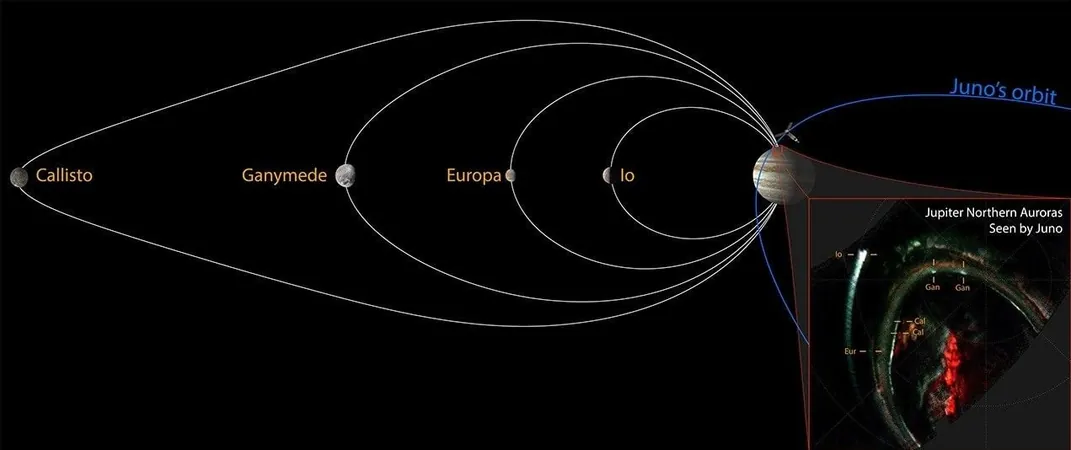
Unlocking the Ocean's Secrets: Scientists Discover Sounds Beneath the Waves
2025-09-02
Author: Li
Imagine the serene sound of waves lapping at the shore or the thunderous crash during a storm. But what if I told you that beneath these familiar acoustics lies a world of hidden signals few ever hear?
Researchers at UC Santa Barbara have made groundbreaking strides in understanding the vast infrasound—acoustic waves below human hearing—generated by breaking ocean waves. Their study, recently published in the Geophysical Journal International, has unveiled the stealthy infrasound and seismic signals that could revolutionize how we monitor ocean conditions.
The Science of Sound: What Lies Beneath?
Most of the sounds from the surf, while soothing to our ears, are overshadowed by powerful low-frequency signals. These under-the-radar sounds, traveling through air as infrasound and through the ground as seismic waves, could provide critical data on sea behavior. According to lead researcher Jeremy Francoeur, these signals arise from bubbles created in breaking waves, oscillating due to pressure instabilities and producing acoustic phenomena that ripple across both air and sea floor.
Infrasound: The Ocean's Hidden Symphony
Unlike the sounds we hear at the beach, infrasound lies under 20 Hz—too low for the human ear. Yet it tells fascinating stories of our planet, generated not just by waves but also by events like earthquakes, volcanoes, and storms. Senior author Robin Matoza emphasizes the potential to glean valuable insights simply by tuning into these 'hidden sounds'.
Visualizing Waves Through Sound
Using an array of sensors rather than just one, the research team captured detailed data that allowed them to correlate video footage of crashing waves with infrasound signals. The results? A clear signature of crashing waves revealing pulses between 1 and 5 Hz, comparable to the noise of busy traffic or a bustling restaurant.
The Power of Collaboration and Innovation
Through their innovative approach, the team uncovered that infrasound amplitude directly correlates with significant wave height—a critical factor for understanding ocean dynamics. However, they discovered the relationship is more intricate than they initially anticipated.
Charting New Frontiers in Oceanography
Excitingly, researchers are eager to explore whether the infrasound from one beach correlates with other global locations. Could waves in Tahiti produce the same acoustic signals? As environmental factors shift, how will these infrasound patterns change? Francoeur's ongoing research will delve into these vital questions.
With easy access to their field site just 2.5 miles from campus, the research team can swiftly deploy instruments and iterate on their findings. This closeness also offers invaluable experience for students, who engage in every stage of research—from data collection to analysis, shaping the future of geophysical research.
A Future Powered by Sound
Ultimately, Matoza envisions a sophisticated method to interpret ocean conditions solely based on infrasound and seismic data, complementing existing monitoring technologies that falter in poor visibility. This pioneering research not only enhances our understanding of the ocean but also offers a promising glimpse into the future of environmental monitoring.
So the next time you stroll along the shoreline, remember: there’s a whole symphony of hidden sounds beneath the waves, whispering secrets of the ocean just waiting to be uncovered.




 Brasil (PT)
Brasil (PT)
 Canada (EN)
Canada (EN)
 Chile (ES)
Chile (ES)
 Česko (CS)
Česko (CS)
 대한민국 (KO)
대한민국 (KO)
 España (ES)
España (ES)
 France (FR)
France (FR)
 Hong Kong (EN)
Hong Kong (EN)
 Italia (IT)
Italia (IT)
 日本 (JA)
日本 (JA)
 Magyarország (HU)
Magyarország (HU)
 Norge (NO)
Norge (NO)
 Polska (PL)
Polska (PL)
 Schweiz (DE)
Schweiz (DE)
 Singapore (EN)
Singapore (EN)
 Sverige (SV)
Sverige (SV)
 Suomi (FI)
Suomi (FI)
 Türkiye (TR)
Türkiye (TR)
 الإمارات العربية المتحدة (AR)
الإمارات العربية المتحدة (AR)